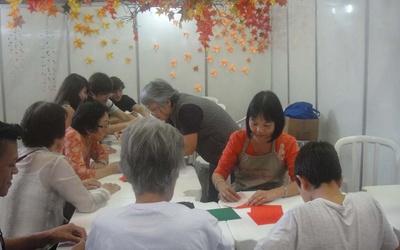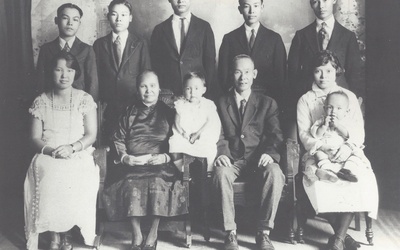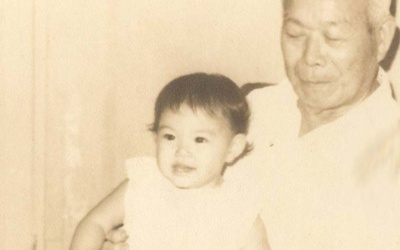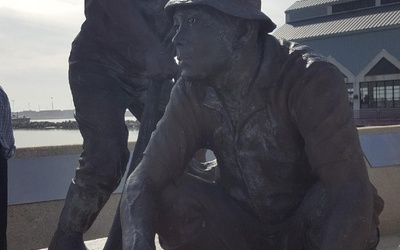Nikkei Chronicles #7—Nikkei Roots: Digging into Our Cultural Heritage
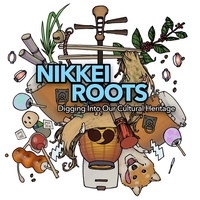
Stories in the Nikkei Chronicles series have explored many of the ways that Nikkei express their unique culture, whether through food, language, family, or tradition. For this edition, we are digging deeper—all the way down to our roots!
We solicited stories from May to September of 2018 and received 35 stories (22 English; 1 Japanese; 8 Spanish; and 4 Portuguese) from individuals in Argentina, Brazil, Canada, Cuba, Japan, Mexico, Peru, and the United States. For this series, we asked our Nima-kai community to vote for their favorite stories and an editorial committee to pick their favorites. In total, four favorite stories were selected.
Here are the selected favorite stories.
Editorial Committee’s Selections:
- ENGLISH:
Sharing Heart Beats
By Mori Walts
- JAPANESE:
The Tea of Soul from Aizuwakamatsu Revived After 150 Years
By Nao Magami
- SPANISH:
The Japan Inside Me
By Akemi Figueredo Imamura
- PORTUGUESE:
Crossing the World
By Heriete Setsuko Shimabukuro Takeda
Nima-kai selection:
- 27 stars:
The Mochitsuki Tradition in the Hikari Group of Londrina, Paraná
By Alba Shioco Hino, Nilza Matiko Iwakura Okano, Kiyomi Nakanishi Yamada
Stories from this series
Crossing the World
Oct. 18, 2018 • Heriete Setsuko Shimabukuro Takeda
“Origami is a means of communication and expression; it's a universal language that brings together different generations and peoples around the same activity.” —Mari Kanegae Toshi came to Brazil on a paper bird. When her granddaughter, born in the oh-so-far-off city of Londrina [the second largest city in the Brazilian state of Paraná], went to Japan to meet her, she realized that she would have to renounce words to communicate with the little girl. She folded a tsuru. She most certainly …
From Lung to Ito
Oct. 17, 2018 • Fran Ito
I am a third generation Chinese American, born on the island of Oahu during the great depression. My grandparents came from Canton, China and, at that time, the Hawaiian Islands were governed by the Royal Hawaiian Kingdom, King Kamehameha’s descendants. When I was born, Hawaii was still a territory of the United States Citizens in Hawaii had no voting rights until the Hawaiian Islands became a State on August 21, l959. By that time, I was twenty-seven years old. Growing …
The Japan Inside Me
Oct. 16, 2018 • Akemi Figueredo Imamura
It was the most anticipated time of the year--summer vacation--and she was happy she didn’t have to get up early or complete endless homework. She wondered how to spend her free time, since she wasn't allowed to play with the girl next door and there was nothing to see on TV. She thought about what she could do; she’d be scolded for playing on the antique furniture in the living room and the decorations she loved so much. The kitchen …
Finding Nikkei Roots Around the World
Oct. 15, 2018 • Ariel Okamoto
Travel uproots daily routines for new places and new discoveries. But, somehow, my own discoveries in my own travels have often given me deeper roots—especially in my evolving Japanese American identity. * * * * * Hiroshima, Japan. Still half asleep, a few of us high schoolers crept out of the hotel and down to the water to watch the first rays of light over the bay—a mandatory, I thought, when visiting the land of the rising sun. This exchange …
Natsukashii Moments
Oct. 12, 2018 • Judith Ichisaka
Natsukashii. That is the Japanese word that best expresses the feeling I get whenever I hear a song from “back in the day” – which, by my definition, could be as far back as my early childhood in the 1980s and ‘90s. Certain Japanese children’s songs immediately transport my mind to some childhood memories from my summer breaks in Japan, where I spent time with my music-loving ojiichan and obaachan. We would run errands almost every day around their neighborhood …
Japanese music and me
Oct. 11, 2018 • Laura Honda-Hasegawa
When I was eight years old, I attended Japanese language school for a while and the only memory I have of it is Gakugei-kai , when students performed musical numbers and plays for a small audience of parents and teachers. The most graceful girl in the class always took on the coveted role of princess in history and those with musical talent sang traditional children's songs. I was never chosen to be the princess nor was I good at singing, …

